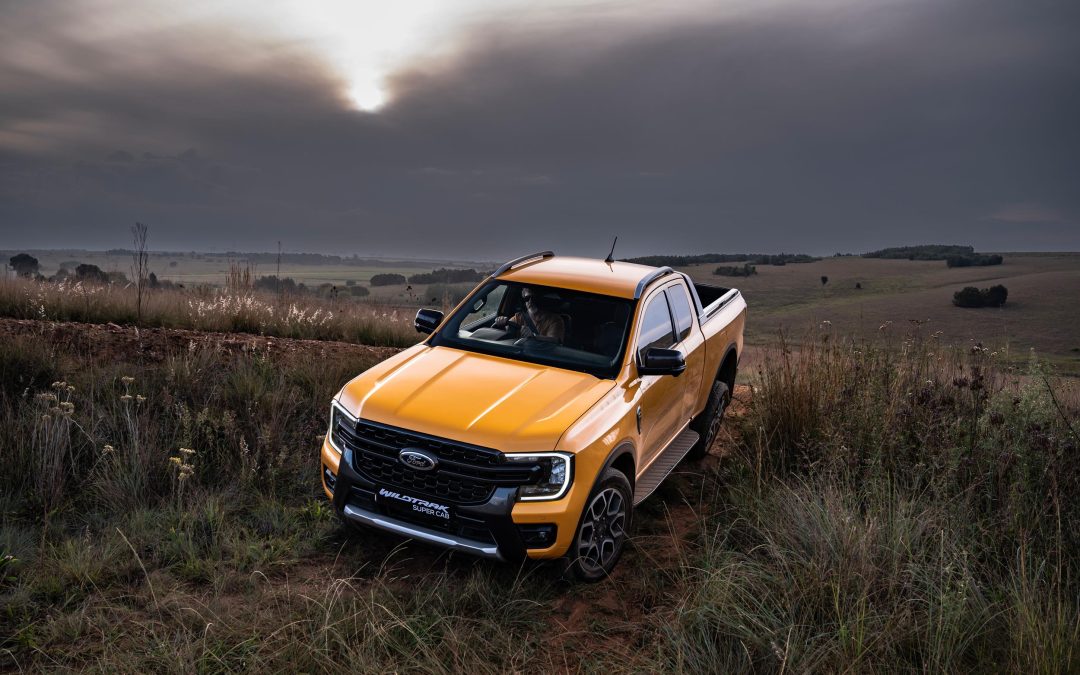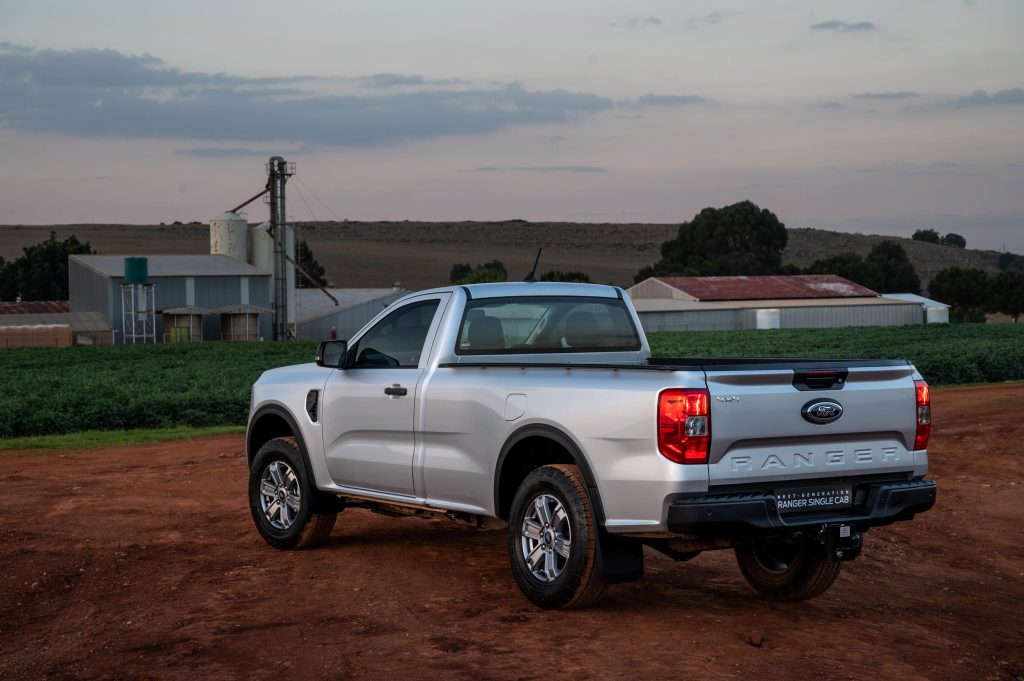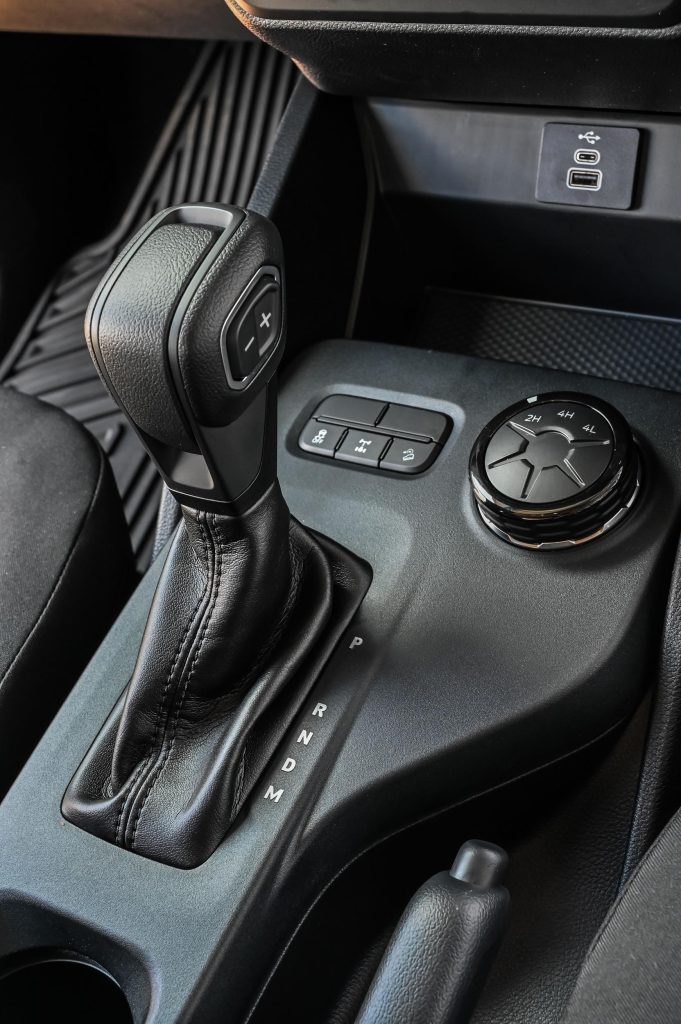Ford recently took a number of South African journalists, vloggers, and bloggers on a 1500+km road trip from Gqeberha to Johannesburg, to experience most of the Single and Super Cab variants of its new generation Ranger bakkie. Unlike the double cabs that are aimed at families, the Single- and Super Cab variants of the new Ranger are mostly targeted at small to medium businesses, large fleet operators, and blue-collar workers looking to haul loads to and fro, meaning these derivatives need to be built tough.
And luckily they are, as attested by the large variety of terrain we encountered over the course of the three-day journey including tarred roads, highways, dirt roads, proper offroad sections, and the worst potholed road that even many of the seasoned motoring journalists themselves have come across (in the Free State on route to the Gariepdam).
Almost as many variants as Kang the Conqueror in the MCU
The single- and super-cab range of the new Ranger consists of the first-ever (and range-topping) Wildtrak Super Cab powered by a 154kW 2.0L Bi-Turbo diesel engine, which boasts a 10-speed automatic and 4×4, as well as two high-spec XLT Super Cab models – namely a 4×2 automatic with the 125kW 2.0L Single Turbo engine, and a 4×4 with the 2.0L BiT engine and Ford’s advanced 10-speed automatic. For good measure, there is also three Super Cab models introduced in XL trim powered by Ford’s economical 125kW 2.0L Single Turbo engine, which have either manual or automatic gearboxes and come in 4×2 guise, or have a six-speed automatic in 4×4 guise.
Six Upgrade Packs are also available on the XLT series. A styling pack is available with black treatment for the front grille, mirrors and door handles, the addition of a black sports bar, painted accent colours for the front and rear bumpers and fog lamp bezels. A choice of 17 and 18-inch alloy sport wheels are available, along with the off-road underbody protection kit which is packaged with 17 or 18-inch rims and all-terrain tyres. The interior upgrades comprise dual-zone climate control, wireless charging pad, embedded navigation for the SYNC 4A system, partial leather seats and auxiliary accessory switches mounted in the roof. Safety upgrades available include the Collision Mitigation System (with Pre-Collision Assist, Dynamic Brake Support, Forward Collision Warning and Automated Emergency Braking), Post-Impact Braking, Lane Keep Assist (with Lane-Keeping and Road Departure warning) and automatic high-beam headlight activation.
Purpose-built for hauling a$$, but delivers a cosy ride for your bum while doing so
Underscoring the new Ranger’s impressive capability is an upgraded chassis riding on a 50mm longer wheelbase, along with a 50mm wider track compared to the previous Ranger. A hydro-formed front-end structure allows for improved design and packaging, providing greater airflow to the radiator to keep the engine temperature low when towing or carrying heavy loads. It also frees up space for an auxiliary battery to be fitted in the engine bay, should this be required.
Cargo management is also enhanced thanks to a wider cargo box packed with features and opportunities to transform the space into a total cargo management makerspace. The Ranger is now 50mm wider, allowing the cargo box to accommodate a standard European pallet between the wheel arches (up to 1 224mm), while the loadbox length runs up to 2 305mm on the Single Cab models for maximum loading volume. The payload capacity ranges from 964kg to 1 186kg, depending on model.
There are six tie-down points in the loadbox to help secure cargo, while external tie-down rails on the XL models create ultimate cargo hauling flexibility, and are designed to easily fit ratchet straps and ropes. Durable plastic box top and tailgate capping protect the loadbox edges and tailgate upper edges, so owners can load equipment without fear of damaging the paintwork.
We got the chance to drive the single cab 4×4 automatic, super cab XLT 4×2 automatic, and single cab 4×4 manual, but unfortunately not the WildTrak over the three days. Ford has really done a remarkable job at making these blue collar bakkies feel very white collar on road as the XLT and WildTrak feel very upmarket inside, are quiet at highway speeds and very comfortable to boot, with the single cab variants, while comfortable as well, having noticeably more road noise making it into the cabin and has a dollop more hard-wearing plastics scattered about the interior cabin.
However, we were very impressed by the fact that even the poverty spec had the digital driver’s display along with the large portrait-style centre touchscreen which incorporates Ford’s SYNC 4A connectivity and entertainment system (10.1″ in the XL and XLT models, or 12″ on the Wildtrak).
Wild thing about to make local bakkie fans’ hearts sing
The Wildtrak Super Cab is equipped with a drop-in bedliner as standard, pockets are moulded into the cargo box sidewalls that allow owners to use wood planks to create compartments in the bed, or build a two-tier loading surface. The Ranger’s innovative new loadbox side-step is included on the Wildtrak, with the practical Cargo Management System available as an option to provide further loading flexibility. Furthermore, on the Wildtrak Super Cab, the fitment of a standard 400W inverter, with 12V and 240V power to the cabin and the loadbox, opens up further possibilities for operating a variety of equipment in any location.
The Wildtrak features a dazzling array of Ford’s most advanced driver-assist technologies, including Adaptive Cruise Control with Stop & Go and Lane Centering, Evasive Steer Assist, Reverse Brake Assist and Tyre Pressure Monitoring System (TPMS). Also standard on the Wildtrak (optional on XLT as part of the Upgrade Packs) are Lane Keeping System with Road Edge Detection, Blind Spot Monitor with Trailer Coverage, Cross Traffic Alert, Post-Collision Braking and Pre-Collision Assist (with Dynamic Brake Support, Forward Collision Warning, and Autonomous Emergency Braking with Pedestrian Detection).
Passive occupant safety is provided by dual front, side and curtain airbags on all Single Cab and Super Cab models.
Whilst the single cab models with Ford’s proven 2.0-litre Single Turbo in-line four-cylinder diesel engine delivered the best fuel economy at around 7 litres per 100 km on tarred roads, the Blue Oval’s renowned 2.0L Bi-Turbo engine in the Super Cab 4×4 models (XLT variants) and Wildtrak trim level offers more punch, and simply feels a lot more punchier too, churning out 154kW and 500Nm of torque. This will definately be our powerplant of choice should we be ordering our dream corporate UTE workhorse.
Pricing is as follows:
Single Cab
2.0L SiT XL 4×2 6MT R464 200
2.0L SiT XL 4×2 6AT R477 800
2.0L SiT XL 4×4 6MT R531 300
2.0L SiT XL 4×4 6AT R545 000
Super Cab
2.0L SiT XL 4×2 6MT R485 400
2.0L SiT XL 4×2 6AT R499 900
2.0L SiT XL 4×4 6AT R542 900
2.0L SiT XLT 4×2 6AT R547 100
2.0L BiT XLT 4×4 10AT R688 900
2.0L BiT Wildtrak 4×4 10AT R772 800
Included in the purchase price is a four-year/120 000km warranty, four-year/unlimited distance Roadside Assistance and five-year/unlimited distance corrosion warranty. The recommended service interval is 15 000km or annually, whichever occurs first.
Customers have the option of purchasing service or maintenance plans up to eight years or 165 000km. The warranty can be extended up to seven years or 200 000km, while the Roadside Assistance can be extended for an additional one or two years.









